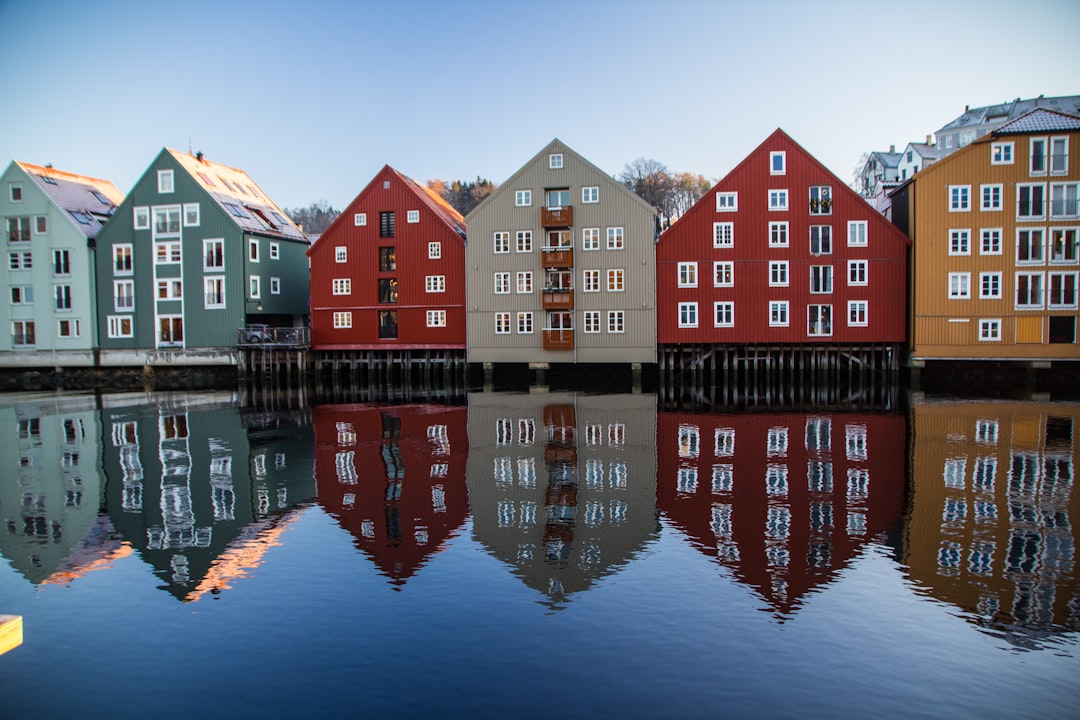Cycling in Norway is not merely a mode of transport; it is a way of life that intertwines with the country’s stunning natural landscapes and vibrant urban environments. With its breathtaking fjords, majestic mountains, and picturesque towns, Norway offers an unparalleled backdrop for cyclists of all levels. The cycling culture here is deeply rooted in the Norwegian ethos of outdoor activity and environmental consciousness.
As more people embrace cycling as a sustainable alternative to driving, the infrastructure supporting this mode of transport has expanded significantly, making it easier and safer for both residents and visitors to explore the country on two wheels. In cities like Oslo, cycling has become increasingly popular, with dedicated bike lanes and rental schemes encouraging both locals and tourists to take to the streets. The government has invested heavily in cycling infrastructure, recognising the benefits of reducing traffic congestion and promoting healthier lifestyles.
As a result, cycling is not only a practical means of getting around but also an enjoyable way to experience Norway’s unique charm. However, with this rise in popularity comes the need for cyclists to be well-informed about the rules and regulations that govern cycling in the country. Understanding these guidelines is essential for ensuring safety and harmony on the roads. Book your 1-hour strategy session with Norway Relocation Group.
Summary
- Cycling is a popular mode of transportation in Norway, with many designated bike lanes and cycling-friendly infrastructure.
- Cyclists in Norway must follow basic traffic rules, including stopping at red lights and yielding to pedestrians.
- Understanding right of way is crucial for cyclists, especially at intersections and roundabouts.
- Hand signals are used by cyclists to communicate their intentions to other road users, such as turning left or right.
- Helmets and proper lighting are required for cyclists in Norway, especially during the dark winter months.
Basic Traffic Rules for Cyclists
Cyclists in Norway are expected to adhere to a set of traffic rules that are designed to ensure their safety as well as that of other road users. One of the fundamental rules is that cyclists must ride in the same direction as traffic. This is crucial for visibility and predictability, allowing motorists to anticipate the movements of cyclists.
Additionally, cyclists are required to obey all traffic signals and signs, just like any other vehicle on the road. This includes stopping at red lights and yielding to pedestrians at crossings. Another important rule is that cyclists must use designated bike lanes whenever they are available.
These lanes are specifically designed to provide a safe space for cyclists, separating them from motor vehicles. In areas where bike lanes are not present, cyclists should ride as close to the right side of the road as possible, allowing for smoother traffic flow. It is also worth noting that riding under the influence of alcohol or drugs is strictly prohibited, with severe penalties in place for those who violate this law.
By following these basic traffic rules, cyclists can contribute to a safer environment for everyone on the road.
Understanding Right of Way

Understanding right of way is crucial for cyclists navigating Norway’s roads. Right of way rules dictate who has priority in various traffic situations, and knowing these can prevent accidents and ensure smoother interactions between cyclists, pedestrians, and motorists. In general, vehicles must yield to pedestrians at crosswalks, but cyclists must also be aware of their surroundings and give way when necessary.
For instance, when approaching a roundabout, cyclists should yield to vehicles already in the roundabout unless otherwise indicated by signage. In addition to roundabouts, intersections can be particularly tricky for cyclists. When approaching an intersection without traffic lights, cyclists must yield to vehicles coming from their right unless there are specific signs indicating otherwise.
This can be a source of confusion for many new cyclists, so it is essential to remain vigilant and prepared to stop if needed. By understanding and respecting right of way rules, cyclists can navigate Norway’s roads with greater confidence and safety.
Using Hand Signals
Effective communication is vital for ensuring safety while cycling, and using hand signals is one of the most important ways cyclists can convey their intentions to other road users. In Norway, hand signals are not just a courtesy; they are a legal requirement that helps prevent accidents by making movements predictable. Cyclists should signal their turns well in advance to alert motorists and pedestrians of their intentions.
For a left turn, extend your left arm horizontally; for a right turn, extend your right arm horizontally or use your left arm bent upwards at the elbow. In addition to signalling turns, cyclists should also signal when they are stopping or slowing down. This can be done by extending one arm downwards with the palm facing back.
By consistently using hand signals, cyclists can foster better communication with other road users, reducing the likelihood of misunderstandings and accidents. It is essential for both new and experienced cyclists to practice these signals regularly so that they become second nature when navigating busy streets.
Helmet and Lighting Requirements
Safety gear plays a crucial role in protecting cyclists on the road, and in Norway, there are specific regulations regarding helmets and lighting equipment. While wearing a helmet is not mandatory for adults, it is highly recommended due to the significant reduction in head injuries associated with helmet use. For children under the age of 15, however, wearing a helmet is compulsory when cycling.
Parents should ensure that their children wear properly fitted helmets every time they ride. Lighting requirements are another critical aspect of cycling safety in Norway. Cyclists must have working front and rear lights when riding after dark or in poor visibility conditions such as fog or heavy rain.
The front light should emit a white light while the rear light must be red. Additionally, reflectors on bicycles are required to enhance visibility from all angles. By adhering to these helmet and lighting regulations, cyclists can significantly increase their safety on the roads while also setting a positive example for others.
The question of whether to ride on the pavement or the road can often be a point of confusion for cyclists in Norway. Generally speaking, cyclists are permitted to ride on the pavement if it is specifically designated for bicycle use or if there are no bike lanes available on the road. However, it is essential to remain cautious when riding on pavements as pedestrians have priority in these areas.
Cyclists should always yield to pedestrians and ride at a speed that allows them to stop safely if necessary. When riding on the road, cyclists must adhere to all traffic rules and regulations applicable to motor vehicles. This includes using bike lanes where available and riding in the same direction as traffic.
In some cases, riding on the road may be safer than riding on the pavement due to potential conflicts with pedestrians or obstacles on the footpath. Ultimately, cyclists should assess each situation carefully and choose the safest option based on their surroundings.
Rules for Riding in Bike Lanes

Bike lanes are an integral part of Norway’s cycling infrastructure, providing dedicated space for cyclists away from motor vehicles. However, there are specific rules that govern their use which every cyclist should be aware of. Firstly, it is important to only ride in designated bike lanes; using them improperly can lead to accidents or conflicts with other road users.
Cyclists should also be mindful of parked cars along bike lanes; always keep an eye out for car doors opening unexpectedly. When approaching intersections while riding in a bike lane, cyclists must remain vigilant as they may need to merge back into traffic or yield to turning vehicles. It is advisable to signal intentions clearly when changing lanes or merging into traffic from a bike lane.
Additionally, cyclists should avoid riding side by side in bike lanes unless it is safe to do so; this ensures that there is enough space for others who may be using the lane as well.
Understanding Roundabout Etiquette
Roundabouts can be daunting for many cyclists due to their unique flow of traffic; however, understanding roundabout etiquette can make navigating them much easier. In Norway, vehicles already within the roundabout have the right of way over those entering it. Cyclists should approach roundabouts with caution and yield to any vehicles already circulating before entering themselves.
It is advisable to signal intentions clearly when exiting a roundabout so that other road users are aware of your movements. In some cases, there may be designated bike paths that run through or around roundabouts; these paths often have their own set of rules regarding right of way. Cyclists should always be aware of signage indicating whether they should yield or have priority when using these paths.
By following proper roundabout etiquette, cyclists can ensure their safety while contributing to a smoother flow of traffic.
Dealing with Pedestrian Crossings
Pedestrian crossings are common throughout Norway and require special attention from cyclists. When approaching a pedestrian crossing, cyclists must yield to pedestrians who are crossing or waiting to cross the road. This rule applies regardless of whether there are traffic lights present or not; pedestrians always have priority at crossings.
Cyclists should slow down as they approach these areas and be prepared to stop if necessary. In some instances, there may be shared crossings where both pedestrians and cyclists can pass through together; however, even in these situations, cyclists must remain cautious and yield to pedestrians first. It is essential for cyclists to respect pedestrian rights at crossings as this fosters goodwill between different road users and promotes safer interactions overall.
Interacting with Motorists
Interactions between cyclists and motorists can sometimes lead to tension on the roads; however, maintaining a respectful attitude can go a long way towards ensuring safety for everyone involved. Cyclists should always be aware of their surroundings and anticipate potential hazards posed by motor vehicles. When riding alongside cars, it is crucial to maintain a safe distance from parked vehicles to avoid being hit by opening doors.
If a motorist needs to pass a cyclist on the road, it is important for both parties to exercise patience and caution. Cyclists should avoid swerving unexpectedly into traffic while motorists should give ample space when overtaking cyclists—ideally at least one metre—especially in narrow lanes. By fostering mutual respect between cyclists and motorists, both groups can coexist more harmoniously on Norway’s roads.
Consequences of Breaking Traffic Rules
Breaking traffic rules while cycling in Norway can lead to serious consequences that range from fines to increased risk of accidents. Authorities enforce strict penalties for violations such as running red lights or failing to yield at pedestrian crossings; these fines serve as a deterrent against reckless behaviour on the roads. Additionally, repeated offences may result in more severe consequences such as loss of cycling privileges or mandatory safety courses.
Beyond legal repercussions, disregarding traffic rules can also jeopardise personal safety and that of others on the road. Accidents caused by reckless cycling behaviour can lead not only to injuries but also create negative perceptions towards cyclists among motorists and pedestrians alike. Therefore, it is imperative for all cyclists in Norway—whether residents or visitors—to familiarise themselves with local traffic laws and adhere strictly to them for their own safety and that of others.
In conclusion, cycling in Norway offers an enriching experience filled with scenic views and healthy activity; however, it comes with responsibilities that every cyclist must uphold. By understanding basic traffic rules, right-of-way principles, hand signals, safety gear requirements, and proper etiquette when interacting with other road users, cyclists can navigate Norwegian roads safely and confidently. For those looking to immerse themselves further into Norwegian culture while enhancing their language skills during their cycling adventures, consider enrolling in Norwegian courses at NLS Norwegian Language School in Oslo.
These courses cater to various proficiency levels and provide an excellent opportunity not only to learn the language but also gain insights into local customs and practices—making your cycling experience even more enjoyable!
Speak Norwegian with confidence. Enroll in a class at the NLS Norwegian Language School now.

